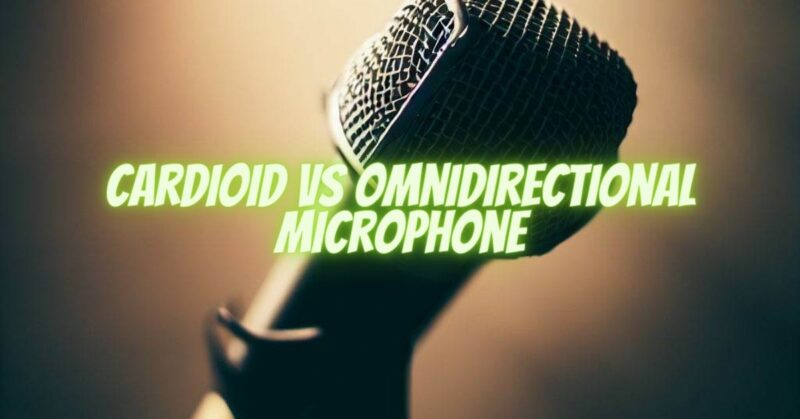When choosing a microphone, one of the most important factors to consider is the polar pattern. The polar pattern refers to the way a microphone picks up sound. There are three main types of polar patterns: cardioid, omnidirectional, and bi-directional.
Cardioid
Cardioid microphones are the most popular type of microphone. They have a heart-shaped pickup pattern, which means they are most sensitive to sound coming from the front of the microphone. Cardioid microphones are good for recording vocals, instruments, and sound effects. They are also good for live performances, as they can help to reduce feedback.
Omnidirectional
Omnidirectional microphones pick up sound equally from all directions. They are good for recording in large spaces, such as churches, auditoriums, and outdoor concerts. Omnidirectional microphones are also good for recording ambient sounds, such as nature sounds and crowd noise.
Bi-directional
Bi-directional microphones have a figure-eight pickup pattern. They are sensitive to sound coming from the front and back of the microphone, but not from the sides. Bi-directional microphones are good for recording interviews and duets.
Which type of microphone should you use?
The best type of microphone for you will depend on your specific needs. If you are recording vocals, instruments, or sound effects in a controlled environment, a cardioid microphone is a good choice. If you are recording in a large space or want to capture ambient sounds, an omnidirectional microphone is a better option. If you are recording interviews or duets, a bi-directional microphone is the way to go.
Table of Comparison
| Feature | Cardioid | Omnidirectional | Bi-directional |
|---|---|---|---|
| Pickup pattern | Heart-shaped | Omnidirectional | Figure-eight |
| Sensitivity | Most sensitive to sound coming from the front | Equally sensitive to sound from all directions | Sensitive to sound coming from the front and back, but not from the sides |
| Best uses | Recording vocals, instruments, and sound effects in a controlled environment | Recording in a large space or capturing ambient sounds | Recording interviews and duets |
Conclusion
Cardioid, omnidirectional, and bi-directional microphones are all good choices for different recording applications. By understanding the different polar patterns, you can choose the right microphone for your needs.
Here are some additional tips for choosing a microphone:
- Consider the type of sound you want to record. Cardioid microphones are good for vocals, instruments, and sound effects. Omnidirectional microphones are good for recording in large spaces or capturing ambient sounds. Bi-directional microphones are good for recording interviews and duets.
- Consider the environment you will be recording in. If you are recording in a noisy environment, you may want to use a microphone with a built-in noise gate.
- Consider the price. Microphones can range in price from a few dollars to several hundred dollars.
- Read reviews. There are many online resources where you can read reviews of different microphones.
With a little research, you can find the perfect microphone for your needs.


